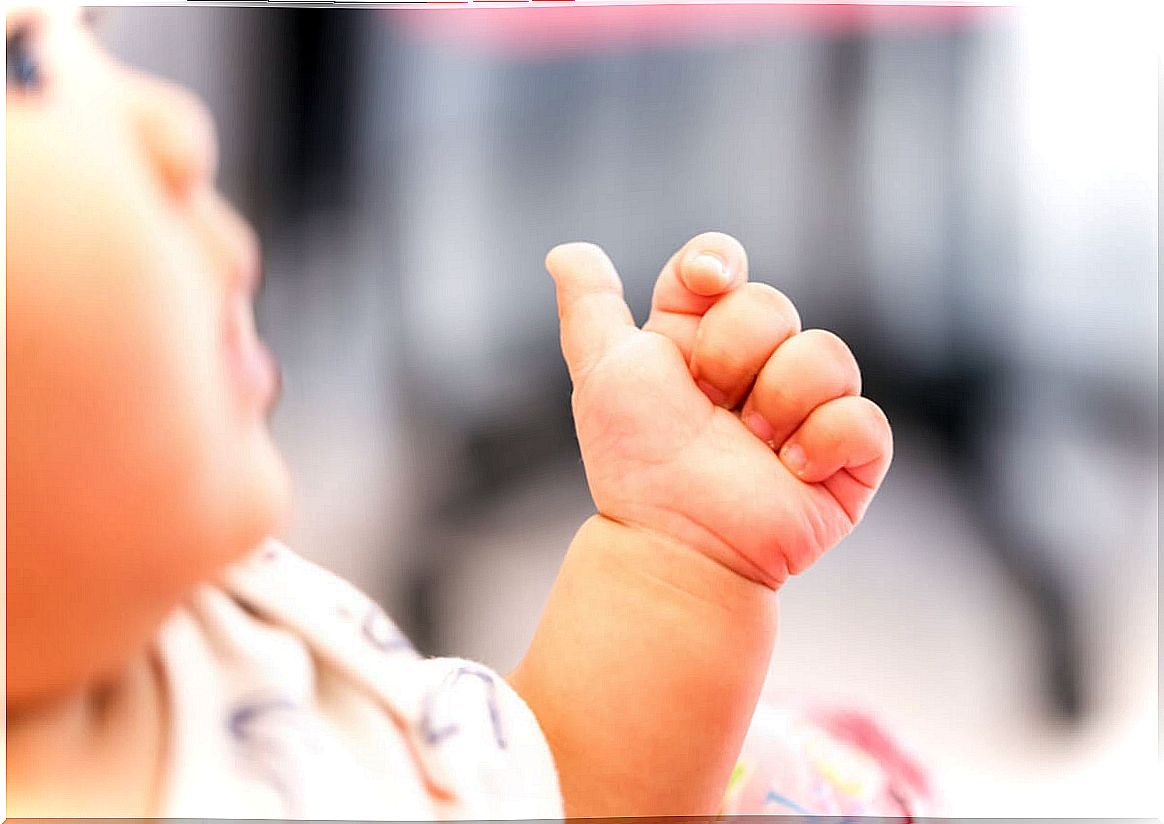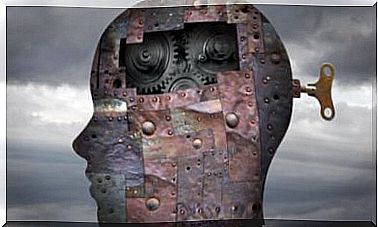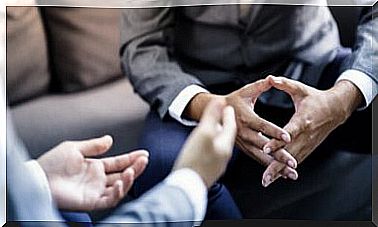Baby Sign To Communicate With The Little Ones

Children speak their first word around 12 months. However, before they already have a language -something rudimentary- that allows them to communicate and make themselves understood. A clear example of this is gestures. What if children were taught to use certain gestures to communicate effectively, before learning to speak? This is exactly what the Baby Sign does.
In this article we are going to review how language develops in the first years of life. In addition, we will see what is a good time to teach sign language and what the Baby Sign can contribute to the education of the baby and how it facilitates the communication of the child with his environment.

A quick look at language development
Three fundamental stages in language development have been described: the preverbal or prelinguistic period, the holophrasic period, and the period of the first word combinations.
In the preverbal period, children communicate with the outside, mainly through screaming and crying . Mothers (especially) tend to address children with a special language called maternal style speech. It is a slow language and simple sentences with an easy to understand vocabulary. In this period, one of the most important elements is gestures and non-verbal responses.
In the preverbal period, however, not everything is non-verbal language: the first intentional sounds begin to be emitted. The first sounds are reflex vocalizations that aim to express disgust or discomfort.
Subsequently, the cooing seems to express more positive emotions. These sounds begin to be considered as indicative of speech maturity when they combine vowel and consonant sounds, as in reduplicative babbling and non-reduplicative babbling. This speech pattern continues to evolve until, at about 12 months, the first word is uttered. On the other hand, the holophrasic period is a period between 12 and 24 months in which children express complete ideas with a single word.
Now, let’s meet the Baby Sign
The Baby Sign is a tool created by Susan Goodwyn and Linda Acredolo . It is an augmentative communication system that consists of teaching babies basic and simple gestures that represent the key words of a language. This will allow them to communicate effectively with their environment before even learning to speak.
Each child develops at their own pace and, therefore, there is no perfect time to teach babies to sign. However, it seems that after 6 months it can begin to be introduced with certain guarantees. From this age on, many babies can sit by themselves and perform certain gestures, such as greeting, clapping, or pointing, which can make the task easier .
The gestures used are simple gestures adapted to the motor abilities of babies. The Baby Sign based on American sign language is the most widespread form, although it is true that some signs can be invented, depending on the needs. Below you can see the most typical way of teaching some words:
- Milk / tit : make a pinching gesture, or milking, at breast level.
- Baby bottle : with the fist closed and the thumb extended, bring the fist to the mouth (as if to suck the thumb).
- Eat : place the tips of the fingers on the lips.
- “More” : shake your closed fist with your thumb up, up and down.
- “No more” : with open hands, cross and uncross the hands.
- Drink : place the closed fist on the lips with the thumb up.
- Sleep : place both hands under the head, turning it slightly to one side.
- ” Where is it?” : shrug your shoulders, palms up.
How do I teach my baby to sign?
To be able to teach effectively, there are a few steps to follow: First, perform the gesture as you say the word, in a positive and pleasant tone. Immediately afterwards, give him the encouragement you talked about. Finally, reinforce the attempts by repeating the word and the gesture and giving him what he was trying to ask for.
It is important to note that the child can be helped to perform a certain gesture if we observe that he or she cannot do it. The correct way to do it is to make the gesture with him or her holding their hands, saying the word while we do the gesture together and, later, giving them what they ask for.
It is essential to start with common and simple words, especially those that need the most (water, milk, eat, sleep). For this reason, it is more advisable to start with those to which he or she will have to resort more often.
You have to be constant for several weeks and, above all, you have to be patient and repeat as many times as necessary, without turning “the sessions” into something aversive for the baby.
Benefits of the Baby Sign
The only danger of the Baby Sign is that it can happen that children adjust to this form of communication and lose interest in starting to speak. The way to avoid this is to say the word whenever we make the gesture and the baby makes the gesture and as he grows, reinforce the approaches to the word that they make.
Except for this small detail, this communication system has proven to have great benefits in many aspects of children’s development and, also, in the relationship between parents and children, and we are going to know them below:
- Reduce frustration from lack of understanding. Both the baby, who often resorts to screaming and crying to make himself understood, as well as his family members. This helps to increase the child’s confidence towards parents, since they know that they will know how to respond to their needs.
- They promote positive emotional development. This is derived from the reduction of feelings of frustration.
- It stimulates the development of language and communication, both verbal and non-verbal, since this communication system makes them acquire communication skills and intention before children who do not sign.
- Stimulates intellectual development. Babies who sign have been shown to have higher IQs.
- Promotes the development of autonomy and self-confidence.
- Promotes learning by imitation and observation.
- Strengthens the affective bond of sons and daughters with their mothers and fathers.
- It helps you to communicate better with your baby, even if he cannot communicate verbally.

Other uses of the Baby Sign
This form of communication is also used with deaf children, although with minor modifications, since in these cases it is not necessary to say the word out loud. It is also a good resource for communicating with autistic children, since the latter take longer to develop language (they may not even develop it).
If you find yourself in any of the above situations, the Baby Sign is a good resource that you may want to try. Similarly, if you have a baby less than 6 months old and you are already beginning to experience the helplessness of not understanding him, perhaps this form of communication can help both you and your baby. We invite you to try it and see the benefits.









